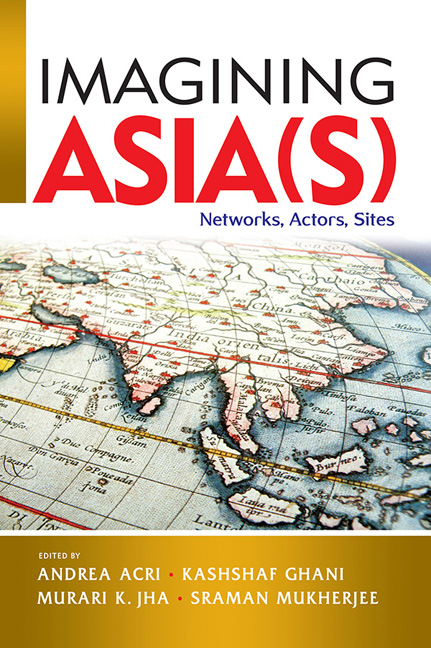Book contents
- Frontmatter
- Contents
- List of Contributors
- Introduction
- Part I Conceptualizing the Region: Past and Present
- 1 Locating Asia, Arresting Asia: Grappling with “The Epistemology that Kills”
- 2 Imagining “Maritime Asia”
- 3 In Search of an Asian Vision: The Asian Relations Conference of 1947
- Part II Conceptualizing Asia through the Prism of Europe
- Part III Networks of Knowledge Across the Indian Ocean
- Part IV Histories and Geographies of Pilgrimage in Asia
- Part V Trans-Local Dynamics and Intra-Asian Connections across Space and Time
- Index
2 - Imagining “Maritime Asia”
from Part I - Conceptualizing the Region: Past and Present
Published online by Cambridge University Press: 31 January 2020
- Frontmatter
- Contents
- List of Contributors
- Introduction
- Part I Conceptualizing the Region: Past and Present
- 1 Locating Asia, Arresting Asia: Grappling with “The Epistemology that Kills”
- 2 Imagining “Maritime Asia”
- 3 In Search of an Asian Vision: The Asian Relations Conference of 1947
- Part II Conceptualizing Asia through the Prism of Europe
- Part III Networks of Knowledge Across the Indian Ocean
- Part IV Histories and Geographies of Pilgrimage in Asia
- Part V Trans-Local Dynamics and Intra-Asian Connections across Space and Time
- Index
Summary
INTRODUCTION
The question as to what Asia is, and as to whether there existed one or many Asia(s), has been asked many times over the past two decades or so. Yet, in spite of a recent wave of studies foregrounded by “borderless”/ global history, and focusing on intra-Asian connections, today's mainstream histories and geographies of Asia are largely the result of colonial and post-colonial national narratives, or of post–World War II global academe, which has framed the “Area Studies Paradigm” and (arbitrarily) divided Asia into the quadrants of South, Central, Southeast, and East Asia.
In this chapter I propose to reconceptualize (i.e., reimagine) Asia by widening the geo-historical framework through which the complex mosaic of cultural and religious phenomena linked by a shared deep history are to be investigated. I begin by offering a historiographical survey tracking the history of the concept of “Maritime Asia”, and exploit it to theorize the long-distance maritime connections and dynamics of interaction among societies throughout the swathe of territory stretching from the Indian Ocean littorals to the Western Pacific. I then apply this perspective to the study of the genesis and spread of Sanskritic Buddhism across Maritime Asia from the third to the fourteenth century CE.
THE IDEA OF MARITIME ASIA
Maritime Asia can be conceived as a dynamic macro-region of intersecting discursive fields across which networks of cultural brokers travelled since time immemorial. From the early centuries of the Common Era, this macroregion constituted an integrated system of littorals and hinterlands connected by the sea routes governed by the seasonal monsoon winds. Influenced by similar environmental and climatic factors, Maritime Asia formed an ideal theatre for the circulation of crops, people, goods, languages, beliefs and ritual systems, and ideas. Spreading across the superimposed geopolitical boundaries of modern nation-states, and transcending such equally arbitrary and historically constructed geographical entities as South/Southeast/ East Asia, I imagine Maritime Asia as forming a single interconnected network, and arguably even an integral cultural ecumene with a shared background of human, intellectual, and environmental history. More than a mere (and static) geographical expression, Maritime Asia is a metaphor representing dynamic social networks that may help us to make sense of complex historical processes, like for example the circulation of Indic religions—most notably, tantric traditions—across Asia.
- Type
- Chapter
- Information
- Imagining Asia(s)Networks, Actors, Sites, pp. 36 - 59Publisher: ISEAS–Yusof Ishak InstitutePrint publication year: 2019

